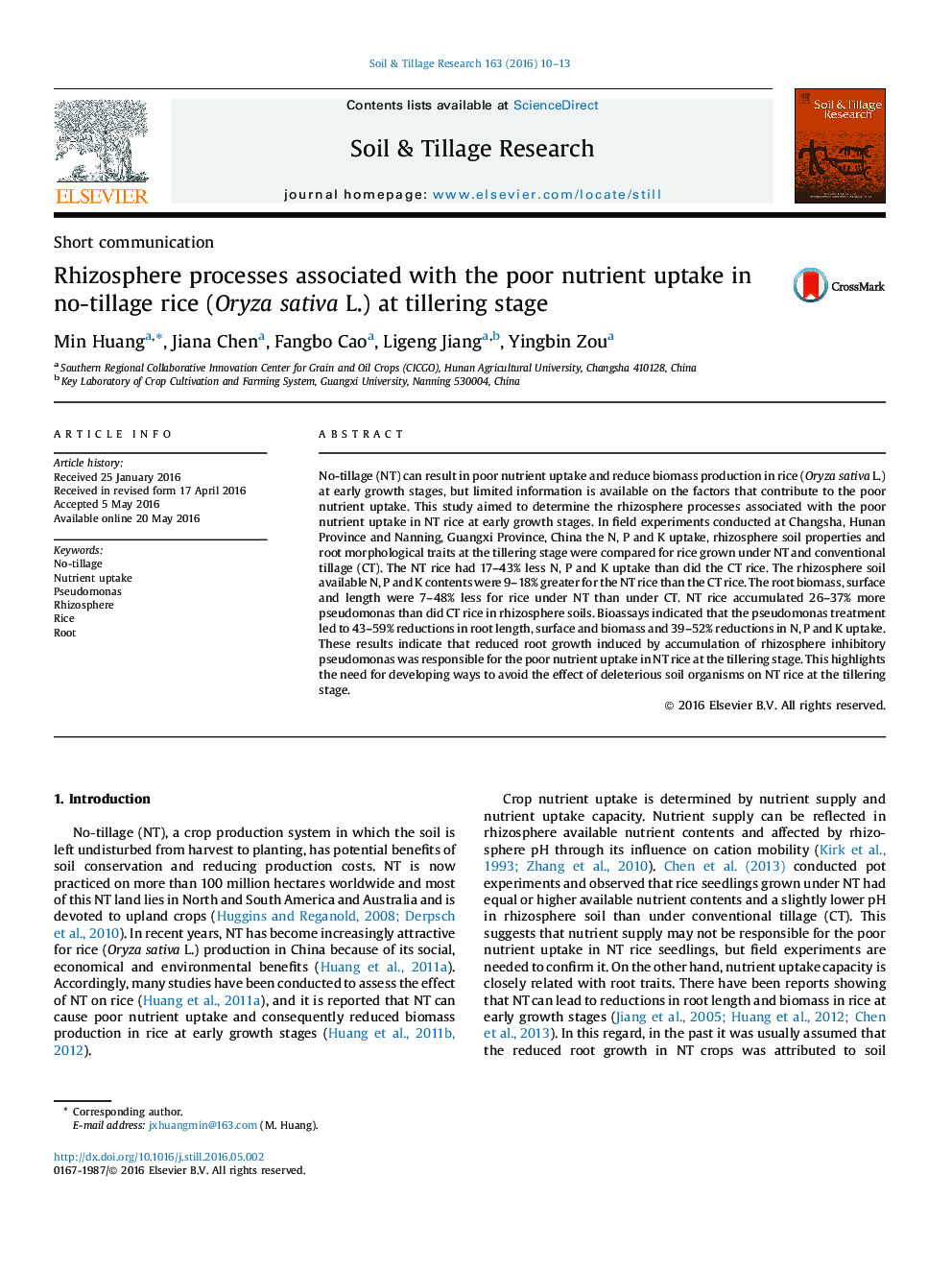| Article ID | Journal | Published Year | Pages | File Type |
|---|---|---|---|---|
| 305350 | Soil and Tillage Research | 2016 | 4 Pages |
•No-tillage caused reduced root growth and poor nutrient uptake in rice seedlings.•Pseudomonas was increased in the rhizosphere in no-tillage rice seedlings.•Isolated pseudomonas had inhibitory activity on root growth in rice seedlings.
No-tillage (NT) can result in poor nutrient uptake and reduce biomass production in rice (Oryza sativa L.) at early growth stages, but limited information is available on the factors that contribute to the poor nutrient uptake. This study aimed to determine the rhizosphere processes associated with the poor nutrient uptake in NT rice at early growth stages. In field experiments conducted at Changsha, Hunan Province and Nanning, Guangxi Province, China the N, P and K uptake, rhizosphere soil properties and root morphological traits at the tillering stage were compared for rice grown under NT and conventional tillage (CT). The NT rice had 17–43% less N, P and K uptake than did the CT rice. The rhizosphere soil available N, P and K contents were 9–18% greater for the NT rice than the CT rice. The root biomass, surface and length were 7–48% less for rice under NT than under CT. NT rice accumulated 26–37% more pseudomonas than did CT rice in rhizosphere soils. Bioassays indicated that the pseudomonas treatment led to 43–59% reductions in root length, surface and biomass and 39–52% reductions in N, P and K uptake. These results indicate that reduced root growth induced by accumulation of rhizosphere inhibitory pseudomonas was responsible for the poor nutrient uptake in NT rice at the tillering stage. This highlights the need for developing ways to avoid the effect of deleterious soil organisms on NT rice at the tillering stage.
